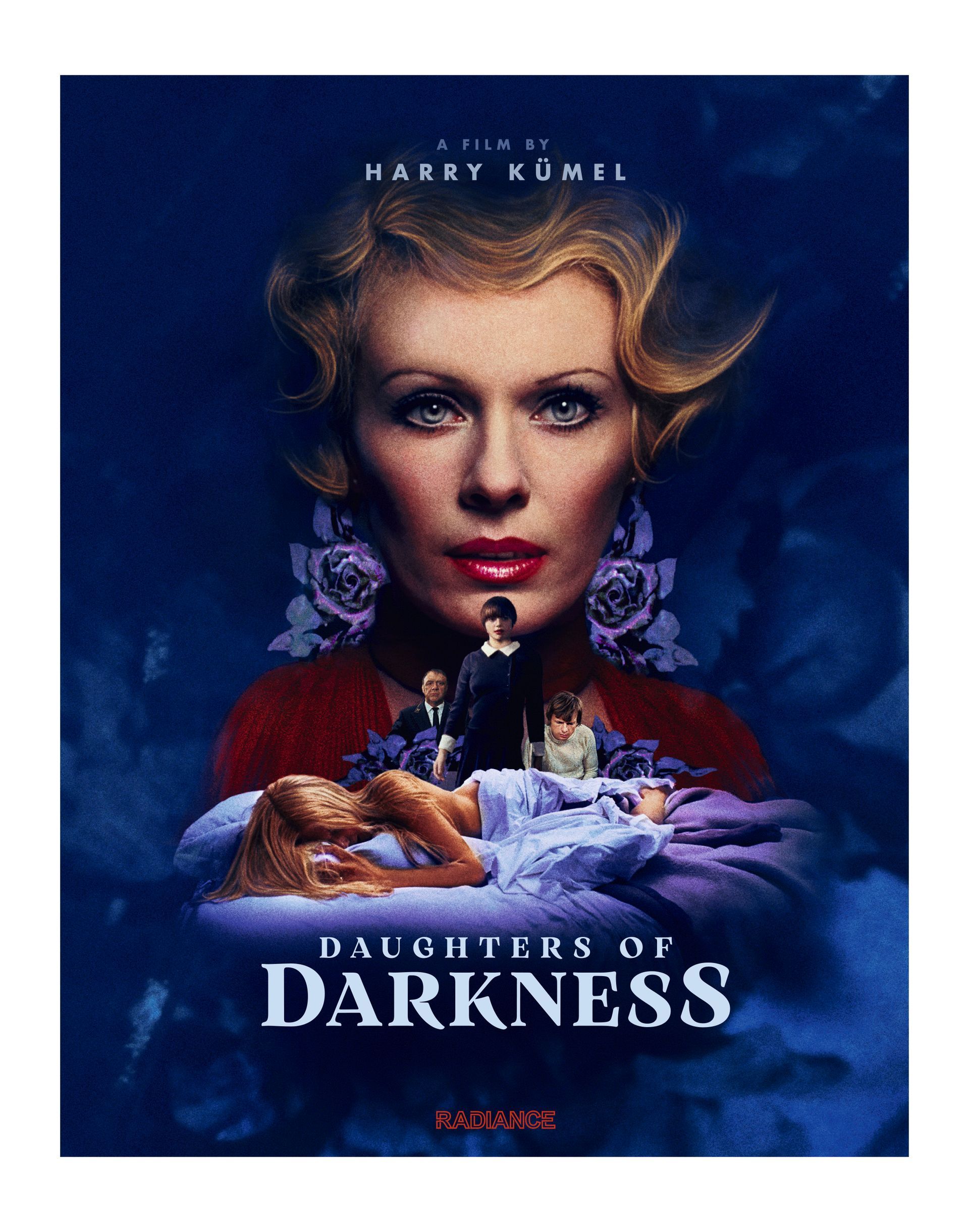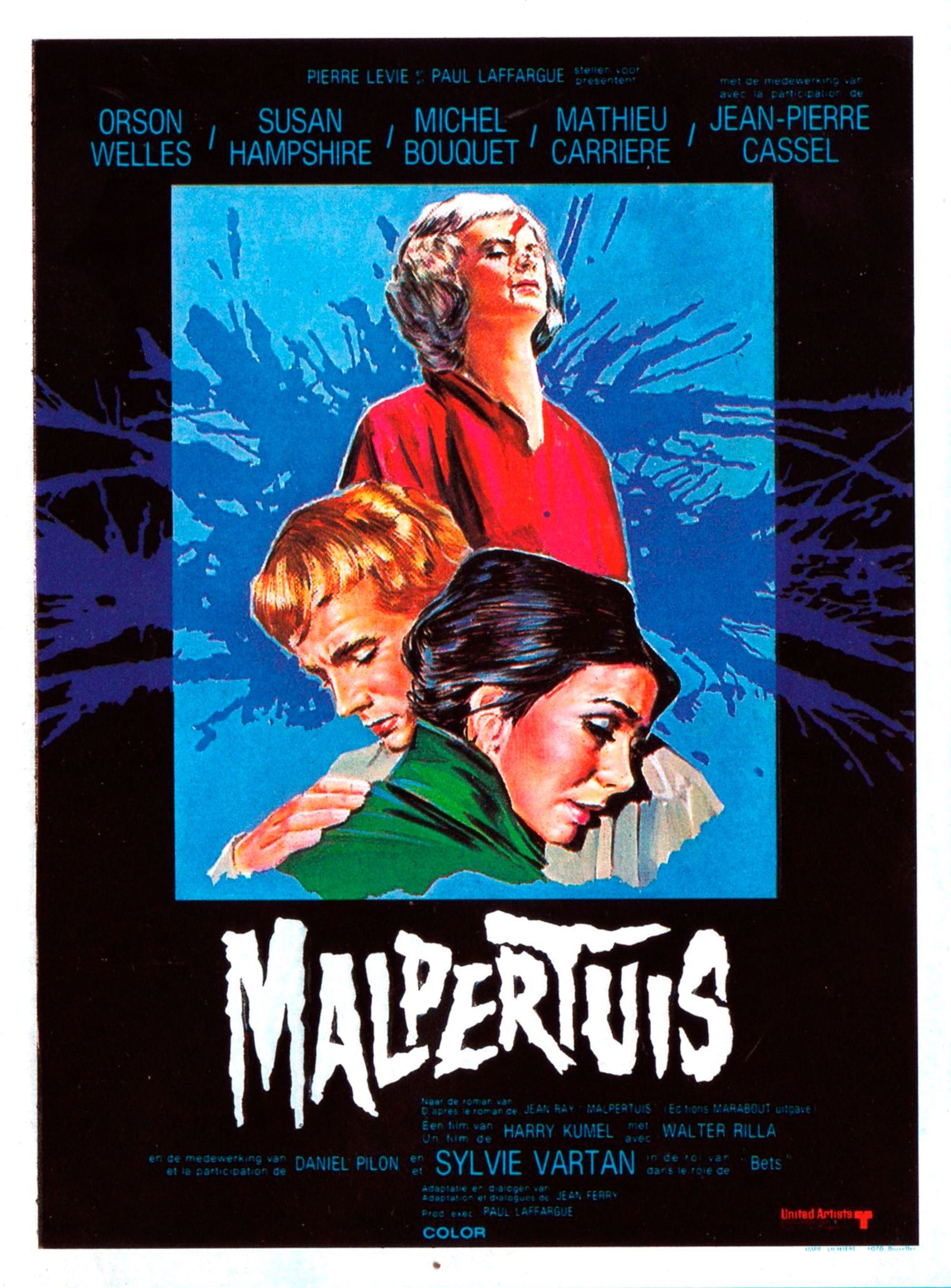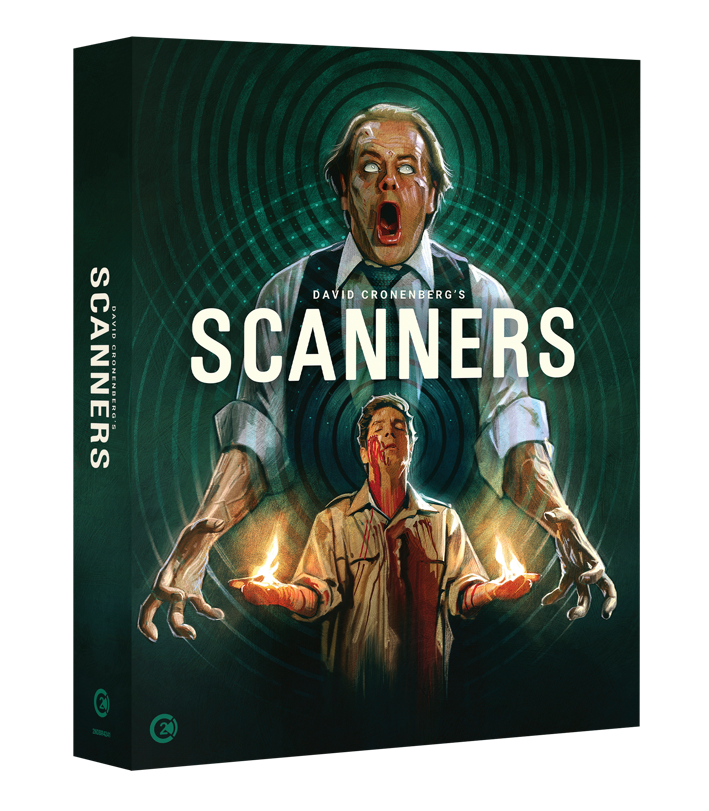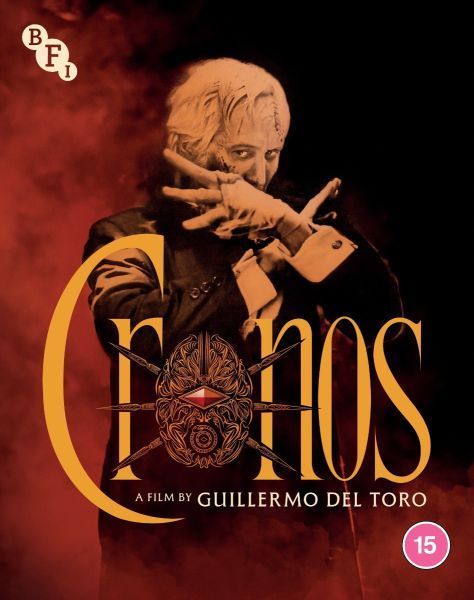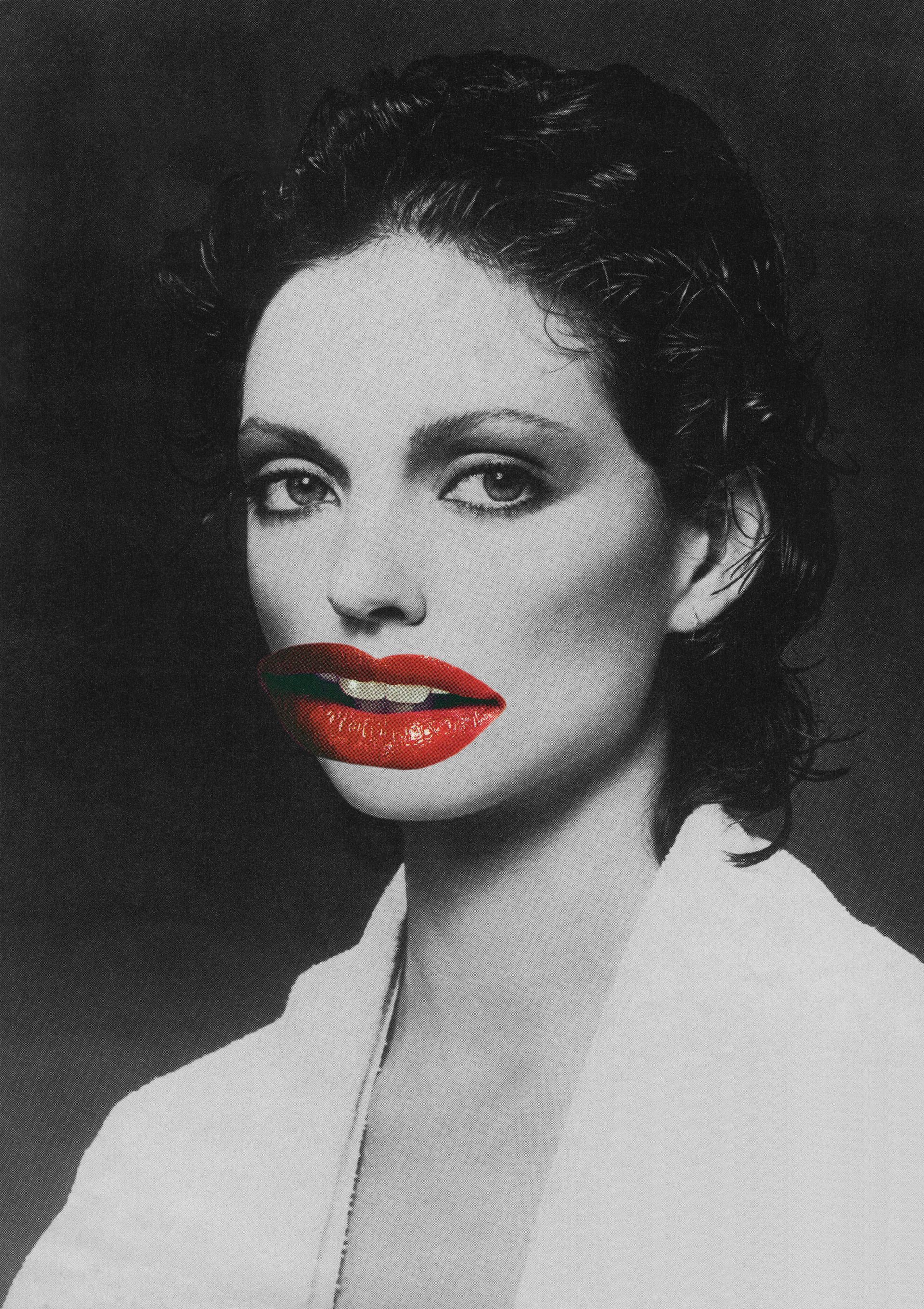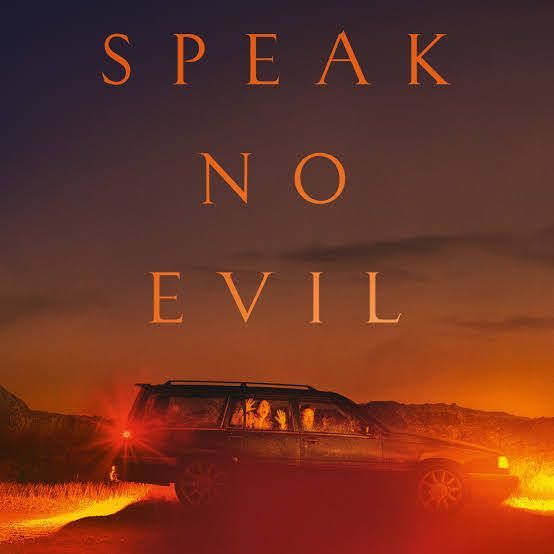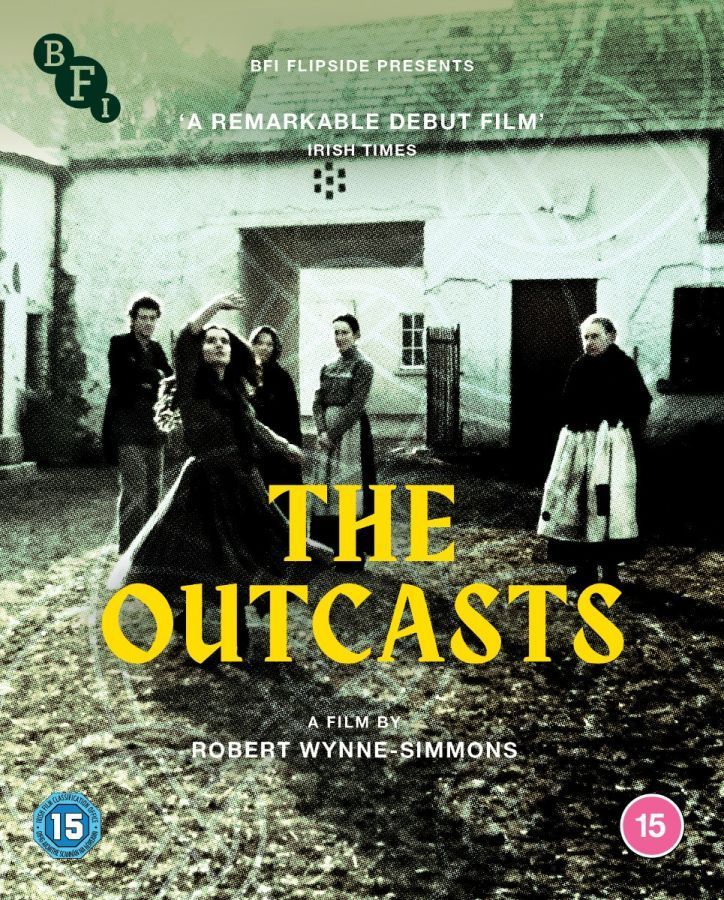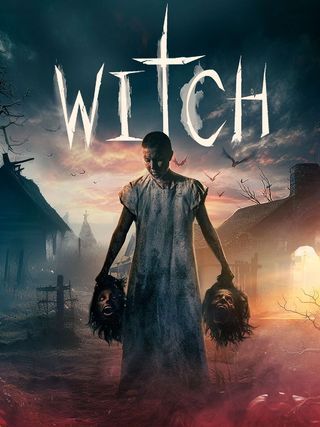Random Access Memory
Punk in Middlesbrough
I was born and brought up in Hartlepool, but my first job was in Middlesbrough, in the late 1970’s, a town that I gravitated to, for more reasons than just proximity to work. Even when I still lived in Hartlepool, I travelled to Middlesbrough frequently to catch the vibrant live music scene my hometown badly lacked.
I became a regular at the Rock Garden, a small, rather dingy venue on Newport Road which catered for the rock music crowd, and was next door to the more sophisticated Marimba, a club aimed at the ‘supper set’ with its light, easy listening style entertainment. There was nothing ‘easy’ about the listening at the Rock Garden, however. The area seemed a little desolate but for these two clubs, and the Acklam pub adjacent to them, a bar then frequented by some of the conurbation’s hardened drunks. They did not seem in any way surprised by the personal appearance of the crowd of youths whom they shared drinking space with that evening, in their ragged, safety-pinned t-shirts, home-customised black drill trousers and spiky, dyed hair, so I can only assume that Middlesbrough cottoned on to the Punk scene a lot earlier than other towns in the North East.
It is this particular 1970’s music scene that provided me with so many happy memories, even in that strike-bound, socially divided and hopelessly misgoverned decade, and I hope it either stirs up some equally happy memories for you, or at least opens a window onto a world you may have been misinformed about.
My first trip to the Rock Garden was to see a band I had barely heard of myself, The Doctors of Madness. My recollection is that Eater, a very young band who hailed from Sunderland, and whose drummer Dee Generate, was a reported 14 years old, supported them. They played with more vigour and enthusiasm than musical proficiency, which was of course the point. The main event was a band, which had, I learned later, been around a few years to little success, which was all the more surprising, seeing as their material and style should have made them serious contenders for stardom. The music was futuristic, hard edged and laden with brilliant hooks, their look, the fag-end of Glam Rock with a guitarist (Kid Strange) seemingly seven feet tall and with a chin like a Cadillac bonnet. It was a stunning introduction to the local music scene, and I even managed to blag a few beers by helping the roadies pack up after the gig, there being no transport back home at that hour.
I have already mentioned that some bands were not exactly virtuosos, but played with plenty of verve and attitude. This was very common within punk (and let’s face it, pop music generally) in stark contrast to the ‘old guard’ of rock music in that period. Rock music was at its most sickeningly decadent in the 1970’s, with many bands of the ‘progressive rock’ persuasion, that placed emphasis on ‘proper’ musicianship, outlandish ideas, a steady intake of exotic pharmaceuticals and at least a pretence at a high level of education. Though rooted in rock music, progressive rock borrowed, magpie-like, from many other styles of music, most notably classical, and attracted a large audience, particularly among those who were taking higher education. Albums sold better than singles in that particular scene, some bands, notably Led Zeppelin, opting not to bother releasing singles, and the often indulgent, other-worldly nonsense that passed for music in that scene served to alienate still further the coming generation of pop fans. Punk arrived in the 1970’s rock music scene, like a scruffy, uninvited guest at a millionaire’s birthday party.
The first venue I ever attended in Middlesbrough was not, however, the Rock Garden, but the Town Hall, and I still count it as one of the best gigs I have ever attended. The Jam were a new, up and coming band at the time, and I recall seeing them outclass every other band, performing ‘In The City’ on ‘Top of the Pops’ the previous night. Supported by a forgettable blues band with punk leanings, ‘Cyanide’, The Jam’s set was run like a military operation, leaving the audience with little time to draw breath, let alone get bored. Rick Buckler underpinned the sound with his furious drumming, Bruce Foxton laid down bass lines that would have defeated most seasoned pros, while Paul Weller’s chopping guitar work, steeped in classic Who styling, whipped up the excitement to dangerous levels. Whenever I hear even one track from that first LP, ‘In The City’, I’m right back there in the Gothic splendour of the Town Hall, and I count myself privileged to have seen one of the best bands of the late 20th Century, in their youth.
Although relatively well served for night clubs and what your Dad probably calls a ‘discotheque’, it is essentially these two venues that would stage gigs from the new phenomenon of punk, and I would return time and again to them for my periodic fix of live music in the years 1976 to 1981, after which I left for the 24-hour city of London to more certain employment and, I knew, more music. The punk scene, and indeed all musical scenes, were, in those pre-You Tube, pre-bedroom recording studio days, firmly based in London, though it is fair to say that every city and every town, large or small, had its little enclave of punks, even if they tended to be after-dark and weekends only, due to the sometimes less than tolerant attitudes shown by some members of society toward them. Although I never faced such treatment, many of my friends reported being threatened and even beaten by complete strangers on the street, always prefaced by some reference to the way they were dressed, their supposed political beliefs or anti-establishment attitudes. The worst that happened to me was being stopped in the street at around 10.30 at night by a couple of police officers, who seemed convinced they had a live, anti-royalist anarchist in their grip. Their disappointment at not finding any hidden marijuana butts in the phone box I had just used, and their obvious distaste for my Sex Pistols t-shirt (NB logo only-no obscenities or images that could deprave or corrupt on it) ensured that although they couldn’t actually drag me to the station and charge me with anything, they would nevertheless take the opportunity to give me attitude. I bore it with as much dignity as I could, bid them goodnight and let them get on with the serious business of harassing other people over their appearance.
The ‘do it yourself’ ethic of punk was another aspect of the scene, which was totally at odds with the ‘old guard’ of rock, but eventually permeated through to the mainstream. Many punk bands took on the job of organising their own gigs, doing their own publicity and even self financing their records, a step that would have horrified, or more likely, amused the rock mainstream. Some enthusiastic souls started up their own ‘fanzines’, often in imitation of Mark Perry’s seminal London-based ‘Sniffin’ Glue’, and usually on the office photocopier. Who knows how many North East employers were the unwitting publishers of punk fanzines? I am sure the writers and publishers of ‘Deviation Street’ from Newcastle or Middlesbrough’s own ‘TPA’ were not up to any such antics, in fact the latter had the look of a professional product, but no bad thing as it made the articles a bit easier to read than the deliberate smudging and mis-spelling that some fanzines went in for. Every gig I attended had its fanzine seller, and for a few pence, you could read the outpourings of a local would-be journalist (errr…) raving about his best mate’s band who recently provided local support for say, X Ray Spex or 999.
The North East did foster its own bands, and some at least went on to great success, notably the Tom Robinson Band, and if you want to stretch a point, The Police. The latter’s only local was of course Gordon Sumner (Sting to you) from South Shields, but Tom Robinson’s Teesside credentials are not in doubt. Other local bands included Newcastle’s Penetration, Middlesbrough’s punk-by-numbers Blitzkrieg Bop and Hartlepool’s’ power pop protagonists, Disguise. ‘Shoot Out The Lights’ presented a more thoughtful, experimental approach to punk, and must have felt like a fish out of water in their Hartlepool home. The Tom Robinson Band’s regular appearances at the Rock Garden made the band a favourite, but it was at a time when the venue was coming to the attention of other, less pleasant individuals who flocked there specifically to fight. I recall many years later, Tom Robinson mentioning the edgy gigs at the Rock Garden, and how he went from being beaten up by regulars there, to seeing the same lads in his audience, but enjoying his music. In my period of occupation, they were old-school ‘skinheads’, nothing like today’s well-kempt pussycats, whose dislike for other youth cults generally, and punks in particular, were only exceeded by their espousal of far-right politics. I had no desire to become involved in any of their theatrics, so I usually left gigs if they looked like turning ugly, but it put me off skinheads for many years. I often wonder what became of these characters, and whether they were still the same bloody-minded, blinkered oafs they were in the 70’s. A glance at the less fragrant parts of the political scene would probably answer those questions.
Another early Rock Garden gig was to see the already-mentioned Penetration, an agile, powerful band who had the then-unusual distinction of being female-fronted. The band still play today, and the last time I saw Pauline Murray, she was still in fine voice, and the band still as robust as ever. That night in the Rock Garden, Pauline dedicated a song to a lad who had decked his arm with safety pins through the flesh. It was their war cry; ‘Don’t Dictate’ and I think the irony may have been lost on him. The Damned’s appearance at the same venue, at the height of their chart success, would live on in my memory for many years, filled as it is with Dave Vanian’s vampire-like persona at the mike, drummer Rat Scabies barely contained rage and bassist Captain Sensible’s tendency to take the stage naked except for a beret on his head and a toilet seat around his neck. The punters who flocked to the front three rows will have even more pungent memories of this gig than myself.
The deranged Punishment of Luxury’s carnivalesque appearance at the Rock Garden left me with the distinct feeling that punk had darker corners in its psyche than even some of the more distracted progressive rockers. Their music owed more to the by-then past-it Glam age, but their white overalls and bright, multi-coloured knitted facemasks made them seem the embodiment of evil while they were on stage. These crazed homunculi hailed from the same locality as Penetration, but were poles apart in musical style from Pauline and her men. From a few miles south came The Angelic Upstarts, a band led by an elder punk named Mensi, who bore a striking resemblance to Keith Allen with his mindless hooligan head on, and who made a good few TV appearances, coming across both witty and likeable. This was so even when he was discussing the campaign for justice he had become involved in, which some of you may remember, concerned the suspicious death in police custody, of a man named Liddle Towers. Mensi had a ’no-prisoners’ approach to his music, and was the most passionate, committed performer I had seen up to then.
I find it hard to believe that I paid just 50p to see Adam and the Ants at the time of their first hit, ‘Kings of the Wild Frontier’, but there it is. Inflation has made a nonsense of this figure, and I was earning a whole lot less then, but this I can tell you: I did not pay upfront six months earlier by credit card, after taking part in a ballot with several thousand other poor fools. I paid cash at the desk on the evening of the gig, in exchange for a cloakroom ticket, and one of the bets gigs I ever heard. The band was the most professional I had seen in a small club, and the tiny stage was barely large enough to contain them, especially with Adam’s relentless dancing. A consummate performer, and an assured bunch of musicians all contributed to a very tight live band that would go on to become major stars in the 80’s.
I expect the cover charge was much the same when the Rezillos played, and I certainly wouldn’t have begrudged more, as they were one of the most playful and good-natured bands around. Derided by some sections of the press for their cartoonish image (Saints preserve us from po-faced pop stars, and give us more cartoon nuts) I loved his Scottish band’s appropriation of the popular Mod era clothes and their crossbreeding it with a humorous dose of Gerry Anderson’s puppet show theatrics. Singer Fay Fife’s wide-awake stage persona was a rarity in punk at the time, as was her jokey manner, most apparent in her self-deprecating crack: ‘I’m Frae Fife’
Attempts were made to revive the 50’s style package tours by some in the world of punk. One such value for money tour was the Manchester Punk Package, which was certainly not harmed by rumours that the Buzzcocks would be on it. This may have been a little cheeky misdirection on the part of the promoters, but it got a full house that night. Slaughter and the Dogs played a capable if unimaginative set, supported by Fast Breeder, an old school rock band whose music veered
toward punk, and had the obligatory mad-eyed bass player. Their obvious inspiration was Thin Lizzy, a traditional rock band nevertheless favoured by punks, and they were as good as any I’ve seen. The Drones were the main band, and they played an exciting set, infused with their ideas and opinions about the way punk was becoming a uniform. They were playing to an audience who didn’t mind the uniform one bit, in fact were glad to feel some sense of community in a town that was
suffering from the effects of the recession all too keenly, but I can’t deny the Drones had a point there. Major fashion chains were stocking skinny jeans, zip and safety pin encrusted t-shirts and more ‘straight’ people were adopting the spiky hairstyles once unique to punk.
In my attempt to convey an honest picture of the punk scene as it was lived in the North East, I may be inadvertently making it seem far larger than it really was. The Rock Garden did not hold much more than a hundred people, and I think it’s no exaggeration to say that if you went there four Saturdays running, you knew everyone into punk in the area. My hometown had no live music scene, less still one dedicated to punk, and many towns in the North East were the same. Middlesbrough’s larger size and population proved an advantage over them, and was a magnet for those who couldn’t travel to the much more sizeable, and much more expensive gigs in, say, Newcastle or Leeds City Hall. Most of the premises that put on this style of music were, in an age before dedicated gig spaces, just regular licensed premises and clubs, i.e. no under 18’s, which cut down the core audience even further. Although honoured more in the breach than the observance, these rules, and the North East’s dominant pub and working-men’s club culture tended to produce low gig attendances, and would eventually be dealt a deathblow in the appalling recession of the 1980’s. Punk would be on its last lags by then, rather than cold in its grave as some writers had it, but the work had been accomplished in full. Bands did not need to follow a traditional route to get noticed. They did not have to mind their p’s and q’s in the press. They could do their own publicity, put out their own records, manage themselves; no matter if many who opted to do so failed miserably, it was your own mistake, and not someone else’s doing. It was yours. Just a few of us congregated weekly at this church of the disaffected, and it now seems a very long way from the mainstream acceptability of some of the scene’s longer-lived bands and their spiritual descendants.
Scenester
15/8/10
Punk in Hartlepool
A punk scene? In Hartlepool? I hear you ask, and you’ve every right. Anyone who was not a teenager in the mid to late 1970’s in the North East would probably ask the question, the voce tinged with outright disbelief. My experience tells a different story.
Up until the time I left my hometown of Hartlepool in the late 1970’s, I was travelling to Middlesbrough not only for work, but to get my regular fix of the ‘punk scene’, which was much more prevalent in that nearby town. Hartlepool’s live music scene was restricted to the workingmen’s and night club variety, and a few pubs keen to supplement their income on a quiet night with music fans. Predictably perhaps, these clubs and pubs were not exactly up with the latest trends, and only rarely operated as live music venues.
The actual numbers of those involved in punk in Hartlepool would be hard to estimate, and there was a lot of ‘crossing borders’ between the various popular youth cults of the period, like the hard rockers (the term ‘Heavy Metal’ was not yet in common usage) skinheads and glam rockers. My own estimate, which I admit is more than likely flawed, is not more than 40 punks, but that number would be swelled in time, especially when the style became diluted and subsumed into the ‘New Wave’ that was the more acceptable face of punk.
Punk faced the age-old problem of youth cults, that is, where to meet, and what to do when you get there. I knew no punks over the age of 17, and this being an age of crippling youth unemployment, precious few which had regular jobs. Hartlepool’s places of entertainment tended to be licenses premises, aimed at an older crowd, and so unless your youth club was a particularly tolerant one, there was only the occasional local nightclub gig. Those who looked 18 were at an advantage.
One such punk-tolerant club was Seaton Carew’s ‘Gatsby’, which was mostly a run of the mill discotheque (how quaint that word sounds now) but opened its doors to hard rock a couple of nights a month, and later on, had a punk night. Although attended mostly by the hard rock fans who had become regulars by then, ‘The Carpettes’, as the band were called, still managed to draw a respectable crowd of early punks, among them my good self, in our approximations of the style – drainpipe trousers, tight school-uniform type jackets festooned with badges, and t-shirts with some band or other celebrated on it. There was an uneasy truce between the normally antagonistic mix of the more numerous hard rockers and the tiny punk contingent, but I did get some younger rockers to admit those Sex Pistols fellahs knew how to rock ‘n ‘roll. My memory of The Carpettes is a little shaky; they played a no-nonsense speed-punk set, but it didn’t light the fires of many there, so bedways was rightways that night.
The Carlton was another ‘disco’ keen to attract a varied crowd and their New Wave night (as punk was increasingly being referred to) included a set by the North East’s own Angelic Upstarts. Situated in the empty, demolished once-shopping streets around Lynn Street, this small club got not only one of the country’s premier committed punk bands, but also an eccentric support to boot. Their name unfortunately escapes me (cut me some slack, it has been over 30 years!) but they were basically a rock / blues band with a singer clearly modelled on Johnny Rotten. All in their late 30’s, I would guess, their set consisted of full-on punk (with singer) and languorous blues (without singer) The Angelic Upstarts were the genuine article, however. Their lead singer Mensi, older than most punk fans and bands, and bearing a striking resemblance to Keith Allen with his mindless hooligan head on, led his band into a full-on assault, regardless of the tiny numbers of people in the audience and their indifference to the music. Their song ‘Who killed Liddle?’ a spirited incitement of alleged police brutality in a Gateshead police station against a man named Liddle Towers, resulting in his death, had recently been released as a single, and Mensi and his comrades poured everything they had into its performance. I went away more than pleased with them, although the largely hard rock audience seemed a little shell-shocked by it all. I forgot – rockers didn’t do protest records. I always felt that the Angelic Upstarts were just a little unlucky, as they were clearly committed to their music and had the drive and just as much talent as the others to make a career. It wasn’t to be.
Hartlepool did give birth to some bands of its own, and I only wish I could recall more about the Disguise gig I attended one night. Their music owed a small debt to The (by then very successful) Buzzcocks, but it had a stamp that was all their own. The more experimental ’Shoot Out The Lights’ was more in the avant-garde Pere Ubu mould, but these bands were forming as I was relocating, so I can’t offer any better memories of them.
Without doubt the best and biggest punk gig in Hartlepool in my tenure, was the triple-bill of Eddie & The Hot Rods, Radio Stars and Squeeze, who played Hartlepool Town Hall to a sell-out audience of frenzied kids. An autograph session at a local electrical & record shop helped a lot, and I’ve still got my signed copy of their ‘Live at the Marquee’ EP. All three bands were having modest chart success at the time, but ironically, you could have reversed the billing order, as it was Squeeze who had the most impressive showing, a Top 20 hit with ‘Take Me I’m Yours’ when the Radio Stars’ Nervous Wreck’ trailing and Eddie & The Hot Rods’ ‘Do Anything You Want to Do’ was inexplicably languishing at the edge of the Top 40. I’ve never rated Squeeze, not even in their staggeringly successful 80’s heyday, so I’m probably not the fellah to offer a fair opinion of ‘Take Me I’m Yours’, but I cannot for the life of me fathom why Eddie & The Hot Rods did not become megastars. ‘Do Anything You Want to Do’ has to be one of the wildest, most joyous celebrations of youthful rebellion ever written, and yet it barely scraped into the Top 40. None of this mattered that night as the Town Hall rocked to the sound of this new, exciting take on youth music. I will never forget it, nor that one of the finest gigs I ever attended was in my hometown.
Scenester
10/10/10
Cinemas of Hartlepool: The 1960’s to 1980’s
When I was born, there were six working cinemas in my hometown of Hartlepool, Co. Durham. When I left, there was only one. I intend to explore the possible reasons for this, and more, in this article.
At the height of cinema going in the UK, during the 1940’s, the town’s cinemas were well attended, albeit in a country without a national television service, but with an official policy of ensuring that home grown pictures were shown, and a ready made audience hungry for thrills and with the money to spend on it. In our media saturated age, it is perhaps difficult to imagine a time when the main source of news was the daily newspaper, and the prime entertainment the theatres and music halls, and vying for the same audience, the ‘wireless’. To even begin to understand, we need to immerse ourselves in the lifestyle of the period, banish the personal computer from the home, unplug the television set, restrict ourselves to just two BBC radio stations and read our newspaper by the light of a single 40w bulb. In this, to us, severely restricted world, the cinema, with its imposing frontage, plush carpets and padded seats, sumptuous interiors and silver screen, would seem like another, better, more beautiful world than the strictly rationed, ‘make do and mend’ world we would have been forced to live in. These Art Deco palaces would be more than just an evening’s fun, they would, for a few shillings, bring a rich and strange world of entertainment to us, the drawing room comedies, spectacular musicals, gaudy peplums, hard boiled detective stories, wickedly exciting gangsters, you name your cliché, it started here. They would show us a world, which seemed to exist outside of our own, maybe across the Atlantic, but always slightly out of reach.
Our parents and grandparents eagerly lapped up Hollywood’s output, even as our own British pictures were watched with something like approval or even enjoyment, but in the face of the onslaught from television, in the late 50’s / early 60’s, cinema attendances started to decline. This was not because television had begun to show films, in fact film companies deliberately shunned television showings of their new products; it was simply that television offered a world of entertainment all of its own, and once you had ‘the box’ (or ‘the idiot’s lantern’ as some called it), you were inclined to watch it. Cinema attendances had been in decline since the 1950’s, but with television’s arrival, the figures went into freefall.
Nationally, cinemas were closing, and Hartlepool was no exception to the trend. Out of the three still working in the early 1960’s, the Essoldo closed in the late 1960’s, leaving the Odeon and the ABC to battle it out. I have only a vague memory of the Essoldo, that of seeing Peter Pan there, when I was very young, and it became, almost inevitably, a bingo hall shortly afterwards. A product of the ‘brutalist’ school of 20th Century architecture, it had a white block exterior, resembling a vertical bathroom turned inside out. It was set at an angle to the road, so as to present its entrance lobby to two adjacent roads.
Much stronger in my memory is the Odeon, an ‘art deco moderne’ building, with the famous five letters of its name lined in double neon and sitting vertically on both sides of a triangular prism atop the entrance. I was not familiar with the acronym ‘Oskar Deutsch Entertains Our Nation’ at the time, but what played at that cinema certainly fulfilled its hidden promise to me. The ‘industrial’ style of art deco enlivened the interior, with the curved walls and interlocking features, as if the cinemagoer was seated inside some huge, sleek machine. My first trip to the Muswell Hill Odeon in London, many years later, brought back some happy memories of its distant cousin in Hartlepool, as the architectural style is exactly the same.
There must have been many such buildings like this in the UK in the 1960’s, but sadly many have fallen out of use and been demolished. A few have been converted into multi screen cinemas, anathema to some, but at least they’re still showing films. The entrance was decorated with one poster and three still photos (the famous, and now very sought-after ‘front of house set’) for each of the two queue-sides. The lobby was decorated simply, with an oval, central island-type ticket desk, and at the back, the refreshments stand loaded with the sugary drinks, sweets and popcorn on sale. Once you had your ticket, you were just a few short steps from single-screen dreamland. A turn to the right, and you were in.
Thick red plush curtains hung in front of the screen, the same colour as the carpet and the backing to the comfortable ‘bucket’ seats; the only illumination came from dim house lights along the side walls, and a square clock that told the time using only rectangular black markers for the hands and hours. I usually sat in the Stalls (downstairs), the Circle (upstairs) being dearer, and somehow looked on as more exclusive. Same seats, same film; how more exclusive? I never did fathom it.
I saw countless films there, from my early childhood and well into my late teens; all the James Bond films, the ‘Herbie’ movies and the Disney pictures, but my favourite day as a child was Saturday, which brought with it the national institution known as ‘Saturday Club’. Admission was very cheap, but I’m sure that, had it been more, our parents would have gladly paid up just to get rid of us all for a few hours on a Saturday morning. The bill of fare was predictable and had barely altered in decades. It would include a couple of serials like the original 1930’s Flash Gordon and Buck Rogers and Our Gang, another survivor from that golden age of cinema. There would be a grab bag of cartoons, a Children’s Film Foundation picture, and trailers for forthcoming films, which was my favourite part of the bill. I have vivid memories of rushing home to update my Dad on the ‘latest’ adventures of Flash Gordon at al, only to realise years later that he had seen these selfsame serials back in his childhood, and probably from the same prints!
The Odeon’s great rival at the time, was the ABC, a flat-fronted, more modestly decorated building, but with a higher, vertigo-inducing Circle. The layout was very different to its rival, with a side-mounted ticket office, high steps to ascend for the Circle and doors immediately ahead for the Stalls. The sheer scale of the architecture did a good job of intimidating you before the film began. This was where I saw that perennial childhood favourite, the Wizard Of Oz, on a double bill with Tom Thumb, when I was about seven years old. I was another child whose dreams were frequently invaded by Margaret Hamilton’s terrifying Wicked Witch of the West character, and her truly creepy flying monkey accomplices. I would see many films at the ABC in the years to come, although I was loyal to the Saturday Club at the Odeon, just a few hundred yards away.
When funds allowed, I would buy ‘ABC Film Review’, or the Odeon’s equivalent, a glossily produced brochure for around a ‘tanner’ (6d in old money, 2,5p in today’s) in reality little more than a series of blurbs for this week’s and next week’s films, heavily padded out with local advertising and mail order rings and suchlike. The centre was usually a ‘pin-up’ girl – innocent compared to today’s acres of bare flesh – a temporarily famous starlet inevitably playing a major role on one of the films on offer. Slim, short on detail, with only a few pictures, these little magazines were a rob even at a ‘tanner’, but command silly prices for their ephemeral value at antique type stores today. I have seen them offered at anything from £1 to £10, but I’m sure I haven’t come across one advertising the benefits of shopping at Batt’s General Store in Middleton Road.
Between the second and main feature, advertising was universal, and cinemagoers of all generations need little else but ‘Pah-Pah Pah-Pah Pah-Pah Pah-Pah Pah-Pah-Pah Pah-Pah Pah-Pah Pah-Pah Pah-Pah Pah! to bring the memories flooding back. Whenever I hear that music, I’m back in the Odeon, aged 9, eagerly awaiting the main feature, whilst some craven advertising executive is trying to sell me cigarettes, alcohol or chocolates, only one of which I can legally consume. The brazen adverts for cigarettes of the 1960’s depicted young, healthy people sailing, playing sports and dancing; all without the slightest risk to their health form the high tar cancer stick in their mouths. Alcohol was similarly shown to be the lubricant (and key?) to an impossibly glamorous world of motorboats, exotic holidays and sexually available people, all passed by the film censor with complete abandon. The exciting music pumping out of the cinema sound system (stereo even then) made for a far greater impact than any of the cigarette adverts recently banned from the (usually black & white 12 inch screen) ‘goggle box’ and the anaemic volume coming out of its mono speaker cone. Local advertising was no less interesting, and who knows how many Indian restaurants around the country were brought to our attention by the same full colour picture of a busy kitchen filled with Indian chefs in clean white hats?
These were not the only picture palaces in Hartlepool, and many fellow ‘monkey hangers’ will recall ‘The Westies’ of Collingwood Road. This was a bingo hall by the time I arrived, but had entertained several generations of my family in its barn-like structure. The building had seen better days, and was eventually demolished in the early 1970’s, to make way for single-storey houses aimed at older residents.
By the late 1970’s, the ‘blockbusters’ were attracting the crowds once more, though, as some will recall, they were the exception rather than the rule. Most cinemas struggled to keep head above water most weeks, without the eager crocodile of punters gagging to see ‘Star Wars’, ‘Jaws’, or ‘The Exorcist’. These ‘genre’ films, almost universally despised by critics, were often the saviours of small local cinemas, in a time when cinemas were resorting to unusual and often desperate measures to attract an audience. My local Odeon staged a small ‘Dr Who’- themed exhibition, with life-sized models of the ‘Green Death’ maggots featured in one story from the mid-1970’s, and made by local enthusiasts. For the premiere of ‘Alien’, the Odeon’s management offered a midnight screening for two people only, one in the circle, one in the stalls, with a prize for the ‘survivor’. Readers may remember that ‘Alien’ had a very understated advertising campaign, consisting only of a short trailer, showing an egg opening and emitting light. It gave no indication of what sort of film was to be expected, and so relied on naturally exaggerated word of mouth accounts of how frightening the film was. I cannot recall the names of the two lucky viewers, or whether they stayed the course-are you one of them?
In the late 1970’s, the Odeon became a sort of ‘rep’ cinema on Sunday afternoons, showing themed double bills like ‘That’ll be the Day’ and Stardust’ and ‘The Stones in the Park’ and ‘Performance’. Particularly interesting to me, were the showings of cult British films like Pete Walker’s ‘Frightmare’ which would inform my later tastes and spur me on to read about and watch more films. I count ‘Performance’ as my screen epiphany, but that’s another story. I was a regular attendee and saw many favourites I still enjoy watching. As the decade wore on to its grim conclusion, the increasingly desperate owners resorted to more dubious material until its final closure.
These were typical cinema buildings of the period, with one screen and two levels of seating. The age of the multiplex would come much later, and to my knowledge the Odeon did later turn into a three screen cinema, with the main screen for circle viewing only, and two miserable shoeboxes in the stalls where their pokey screens could be accommodated. I would encounter many of these squalid transformations when I moved to London, as well as many complete cinema closures during the dark days of the 1980’s. Some retained their entertainment character by being turned into live music venues; others succumbed to the inevitable slide into bingo hall or religious meeting hall.
Home Video has often been blamed for the demise of local cinema, in my view, erroneously. The cinemas of Hartlepool closed before the emergence of Home Video, and were, I feel, a direct consequence of the crushing recession that was visited on the North East as a whole, in the late 1970’s and early 1980’s. Renting a VCR, and tapes to watch, was often more expensive than going to the cinema, especially when you remember that membership of a video club, there being no other way to rent tapes, came with a hefty membership fee.
In a town which had virtually no live music and sparse cultural life, the cinemas provided me and many young people like me with a window into a world we desperately wanted to be part of, and it spurred us on to seek our entry into that world. The cinemas’ passing cut that lifeline to later generations, leaving the job of film education to television and its new companion, the technologically advanced but rather humbler videocassette machine, and its regular tribute of rented tapes. We may never see a resurgence of interest in the cinema to rival the staggering attendance figures of the 1940’s or 1950’s, and with modest public funding for home grown films, British Cinema is inevitably going to be dependent on private and often non-UK financial support. It could be argued that the advances in computer technology have opened up new vistas of entertainment such as YouTube and MySpace, with the ability to share files containing films trailers, music and even films themselves, with friends and fellow cineastes. The loss of the shared experience of viewing, and then the discussion afterwards, does seem a step backward in my view, and which may never be retraced satisfactorily.
Scenester
13/7/10
